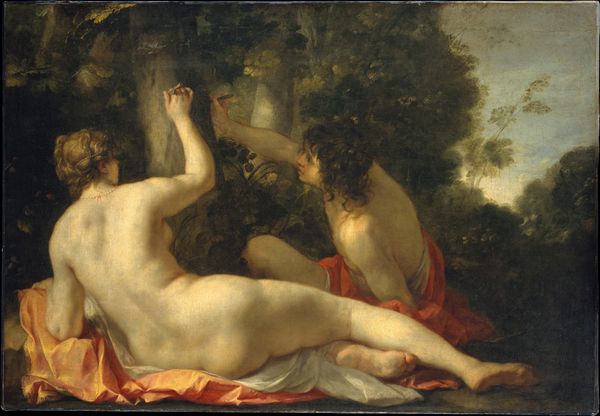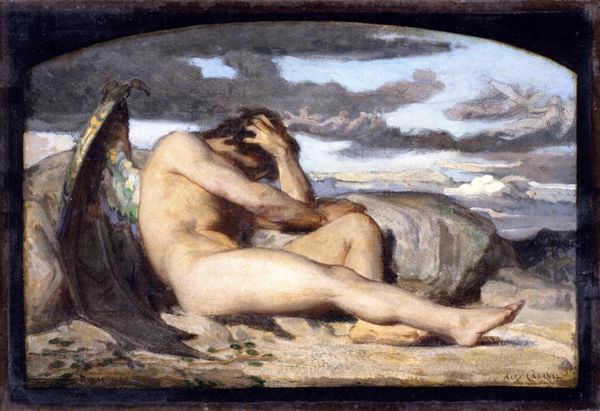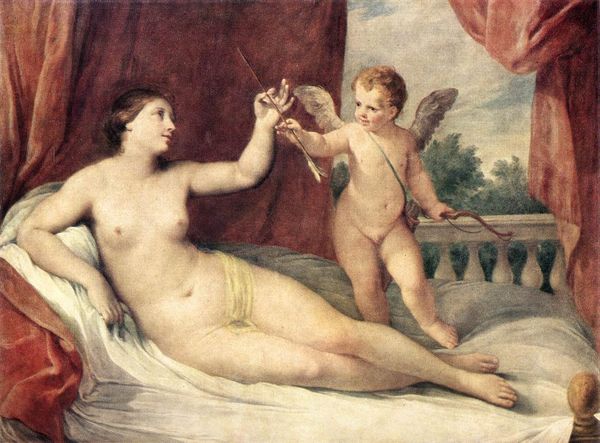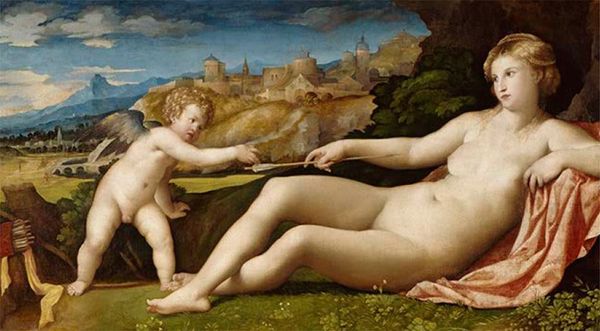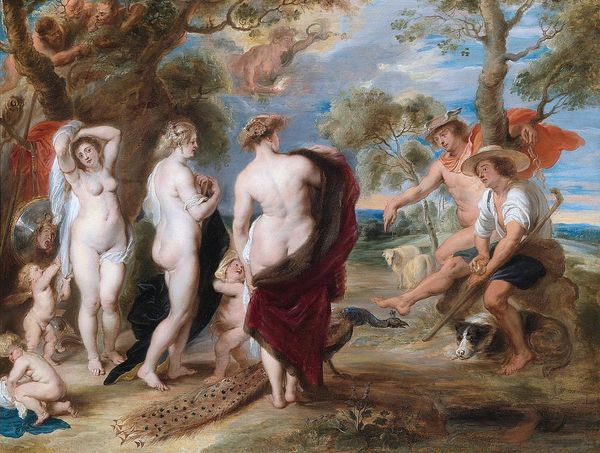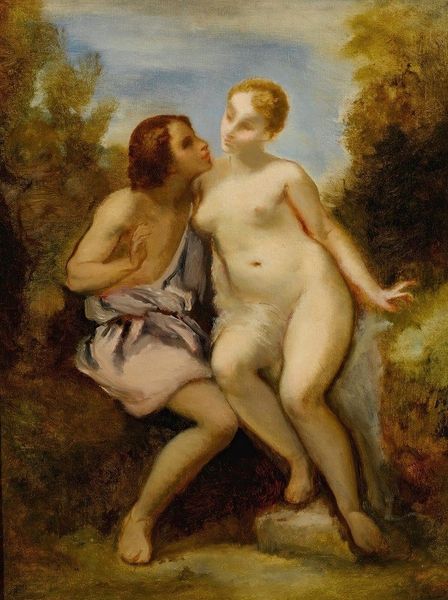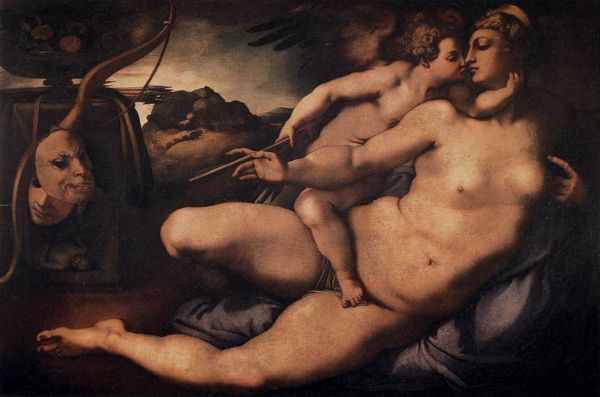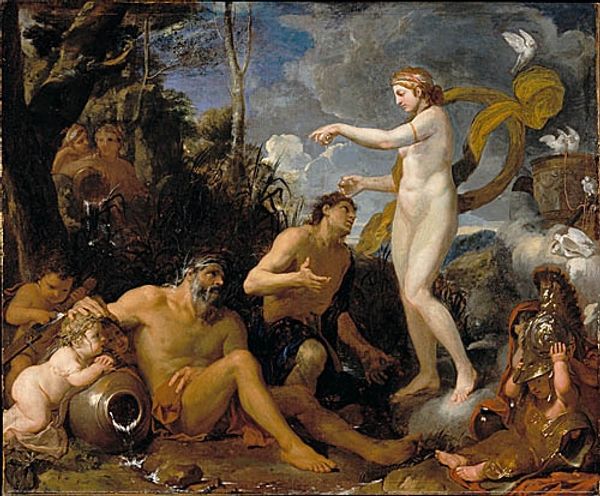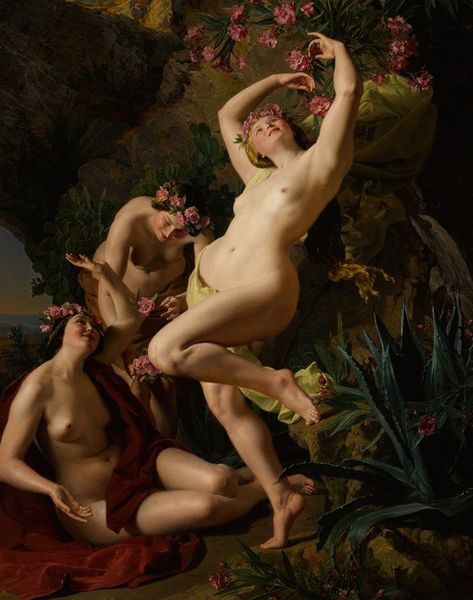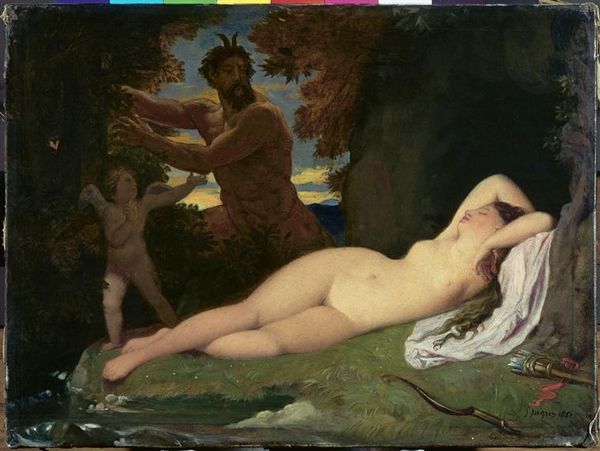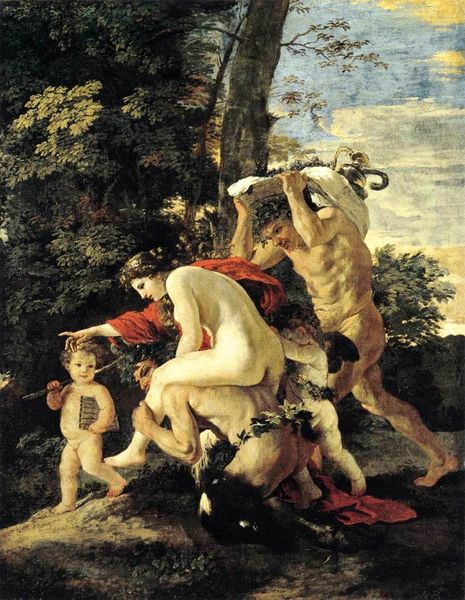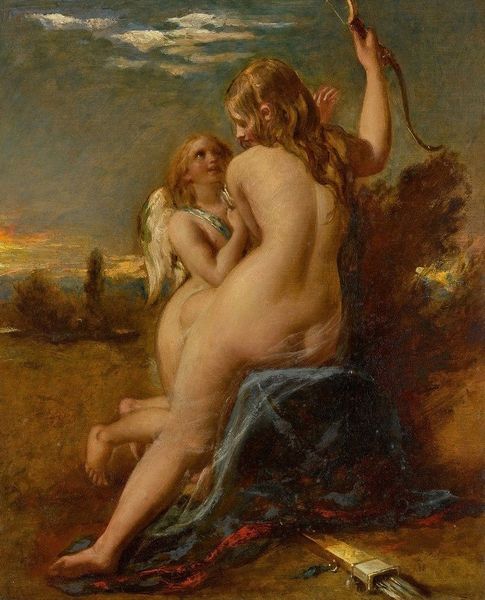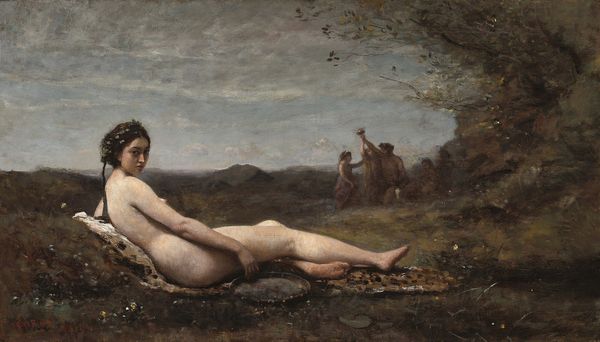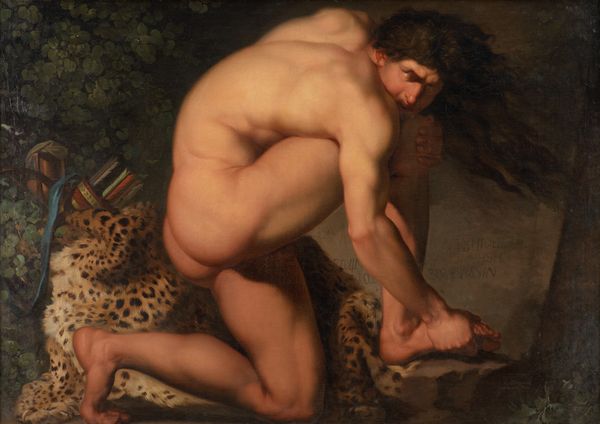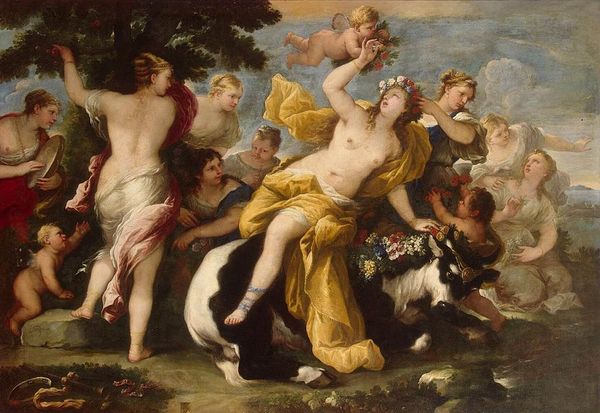
Copyright: Public domain
Curator: Look at the earthy tones in "Bacchante with a Panther" by Camille Corot from 1860, created using oil paint. There's a raw energy to it, a pre-industrial feel that speaks to the materials. Editor: It’s dreamlike. There's a languid quality about the figure that seems at odds with the wildness of the scene, almost as though this is an image fabricated, not observed. Curator: Note how the application of paint is almost coarse. Corot wasn't concerned with perfect illusion, but rather the direct expression of the pigment. This Bacchante figure isn't just some ethereal beauty; she's grounded in the very matter that creates her, isn't she? Consider also how the work itself engages with past treatments of classical subject matter in art history. Editor: Absolutely. Bacchantes, historically, represent frenzied revelry and ecstatic cults associated with Bacchus. But here, we see something almost…domesticated. She's holding up what appears to be a dead bird – a gesture both celebratory and mournful? I wonder what sociopolitical message Corot was hoping to engage through these visual paradoxes, which feels in line with the political unease across France and wider Europe at the time. Curator: Maybe it's about bringing the wild within reach of domestic sensibilities, making the 'primitive' palatable for the emerging middle class of the time. And let's consider the role of the art market here; how does Corot's choice of subject matter engage with the trends and fashions in art sales. The Bacchante's body as an object of display. Editor: Indeed. And, let’s also consider how galleries and museums played then (and now) a pivotal role in legitimizing certain depictions of mythology and female sexuality and what impact such sanctioning may have on popular assumptions of the period, wouldn't you say? It invites further research, at least, I'd argue. Curator: A thought to close: in "Bacchante with a Panther," we see Corot pushing the boundaries of academic painting, literally getting his hands dirty with the materiality of paint, while raising so many issues concerning female representation and sexuality that continue to resonate to this day. Editor: I agree; this piece prompts one to reflect on the cultural context framing the artistic expression while understanding that such pieces gain their strength from challenging these cultural contexts, inviting future reflections across generations, don't you think?
Comments
No comments
Be the first to comment and join the conversation on the ultimate creative platform.
